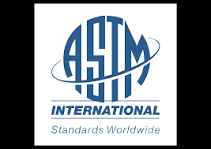
ASTM International, formerly known as American Society for Testing and Materials, is an international standards organization that develops and publishes voluntary consensus technical standards for a wide range of materials, products, systems, and services.
ASTM B 152/B 152-M
Standard Specification for Copper Sheet, Strip, Plate, and Rolled Bar. This standard covers the requirements for copper sheet, strip, plate, and rolled bar produced from copper with the following UNS Nos.; C10100, C10200, C10300, C10400, C10500, C10700, C10800, C10910, C11000, C11300, C11400, C11600, C12000, C12200, C12300, C14200, C14420, and C14530.
ASTM B 162
Standard Specification for Nickel Plate, Sheet, and Strip. This specification covers rolled nickel (UNS N02200) and low-carbon nickel (UNS N02201) plate, sheet, and strip. The material shall conform to the chemical requirements for nickel, copper, iron, manganese, carbon, silicon, and sulfur.
ASTM B 209
Standard Specification for Aluminum and Aluminum-Alloy Sheet and Plate.
This specification covers aluminum and aluminum-alloy flat sheet, coiled sheet, and plate in the alloys and tempers shown in Tables 2, 3, 4, and 5, and in the following finishes:
1.1.1 Plate in all alloys and sheet in heat-treatable alloys: mill finish.
1.1.2 Sheet in nonheat-treatable alloys: mill finish, one-side bright mill finish, standard one-side bright finish, and standard two-sides bright finish.
1.2 Alloy and temper designations are in accordance with ANSI H35.1/H35.1M. The equivalent Unified Numbering System alloy designations are those of Table 1 preceded by A9, for example, A91100 for aluminum 1100 in accordance with Practice E527.
ASTM A 240
Standard Specification for Chromium and Chromium-Nickel Stainless Steel Plate, Sheet, and Strip for Pressure Vessels and for General Applications. This specification covers chromium, chromium-nickel, and chromium-manganese-nickel stainless steel plate, sheet, and strip for pressure vessels and for general applications. The steel shall conform to the requirements as to chemical composition specified. The material shall conform to the mechanical properties specified.
ASTM-B339
Standard Specification for Pig Tin. This specification covers refined tin in pig form recovered and cast from primary and secondary tin bearing materials. One grade of tin metal is specified and is designated as Grade A. The refined tin shall be produced from primary, secondary, or a combination of tin-bearing materials to obtain the requirements of this specification, and may be manufactured by fire refining, vacuum refining, electrolytic or electrowinning refining methods, or a combination of these methods. The metal shall conform to the chemical composition requirements prescribed for tin, antimony, arsenic, bismuth, cadmium, copper, iron, lead, nickel, sulfur, zinc, silver, and other impurities. All tin of Grade A produced and cast at one time shall constitute a lot for chemical analysis.
ASTM-B545
Standard Specification for Electrodeposited Coatings of Tin. This specification covers the requirements for electrodeposited tin coatings applied to metallic articles to provide a low contact resistance surface, to protect against corrosion, to facilitate soldering, to provide anti-galling properties, and to be a stop-off coating in the nitriding of high-strength steels. This specification does not cover hot-dipped tin or other non-electrodeposited coatings, and mill products. Coatings shall be grouped into six service classes, which is based on the minimum thickness and severity of service required for the coating, and three surface appearance types, which is based on the type electroplating process employed. The surface appearance types are matte tin electrodeposits, bright tin electrodeposits, and flow-brightened electrodeposits. Coatings shall be sampled, tested and conform accordingly to specified requirements as to appearance, purity, local and mean thickness, integrity (including gross defects, mechanical damage, and porosity), adhesion, solderability, and hydrogen embrittlement relief.
ASTM-B488
The ASTM B488 gold plating standard applies to engineering applications. Gold coatings that comply with this spec typically are used to increase the substrate’s resistance to corrosion and to prevent tarnishing. The classes and types under this specification mirror those of the MIL-DTL-45204D gold plating standard.

